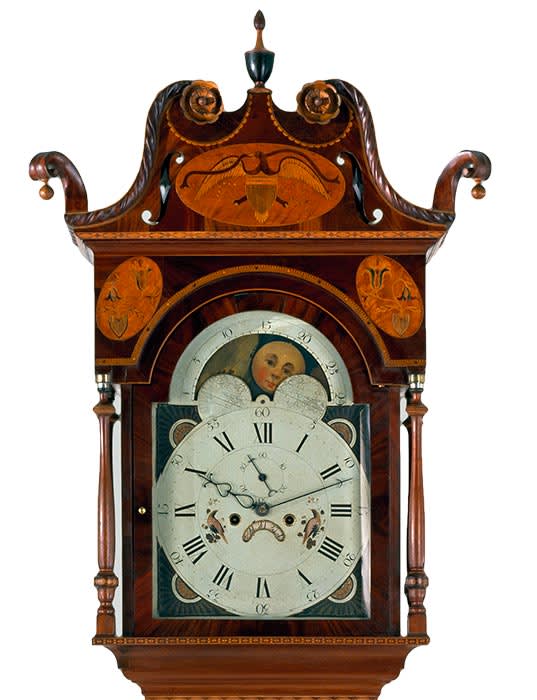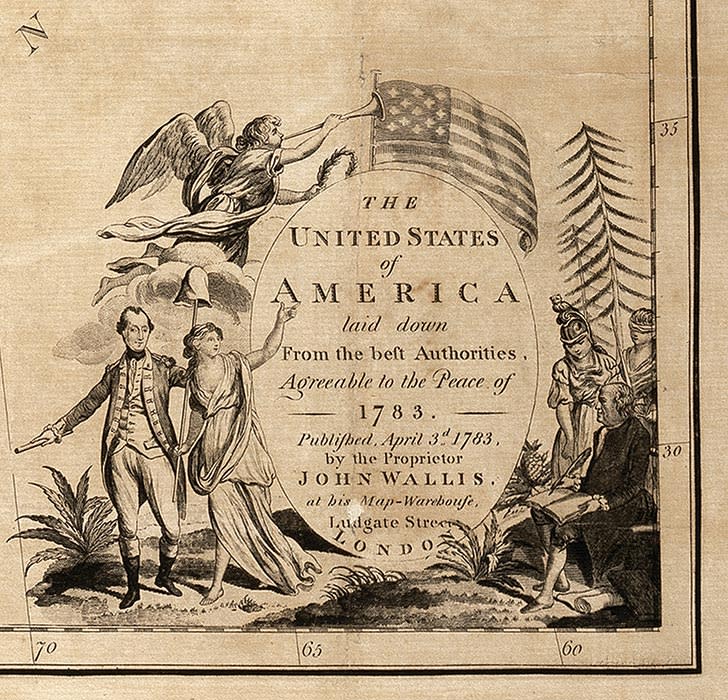
Sidewalks to Rooftops
By the 19th century, the stars and stripes and the eagle were part of the American landscape. These symbols were often used on signs advertising a trade or identifying a tavern. On display in Sidewalks to Rooftops: Outdoor Folk Art is a double-sided sign for A. Hawley's Inn in Connecticut painted by William Rice around 1830. One side features a lion while the other has the eagle with wings spread out. In the center of the eagle is a shield with red and white stripes and blue banner. A similar eagle with shield body is the central image on both sides of another New England signboard with the date 1841.
This exhibition was made possible by a gift from Barry M. Boone in memory of his wife, Linda.

A Rich and Varied Culture
These American symbols also made it to such everyday household items as dishes and furniture. In A Rich and Varied Culture, it is hard to miss a remarkable ca. 1810 Virginia-made case clock. Standing 9 feet tall, it is lavishly decorated with a variety of inlays, the most prominent of which is the American eagle with wide-spread wings and shield-shaped body.
This exhibition was made possible by Carolyn and Michael McNamara.

We are One
With the founding of a new Nation came the search for symbols to represent America. Two of the most iconic are the eagle and the American flag. They began to appear on all manner of objects as soon as the Revolution was won.
On display in the exhibition We Are One: Mapping America's Road from Revolution to Independence is a map printed in England in 1783, just a few months after articles of peace were signed. The decorative cartouche features heroes George Washington and Benjamin Franklin, easily recognizable to all. Prominently placed at the top flies the American flag with its 13 stars and stripes. This is the first British map illustrating the American flag. The map’s title also acknowledges the new Nation as "The United States of America."
This exhibition was organized by the Norman B. Leventhal Map Center at the Boston Public Library and funded in Williamsburg by Hope and Bobby Beck.